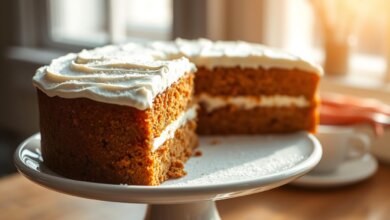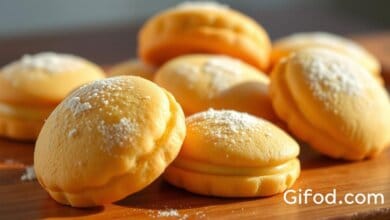Madeleines: The Ultimate Guide To Baking Fluffy French Delights 2025
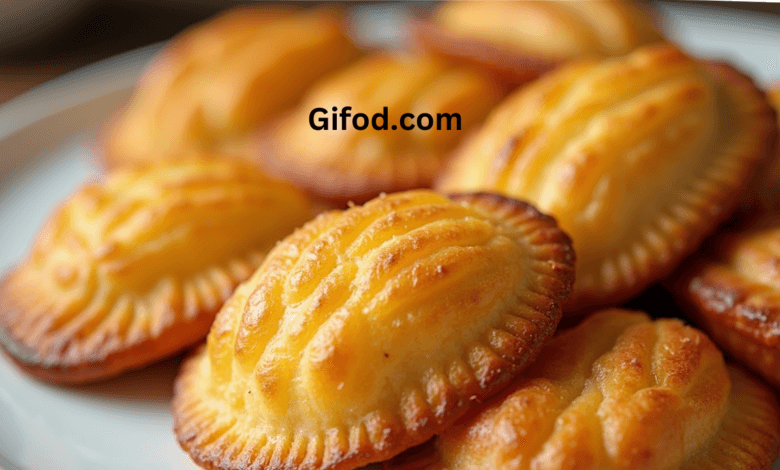
Welcome to the definitive guide on baking madeleines, those delicate, shell-shaped French cakes that are as delightful to look at as they are to eat! Whether you’re a seasoned baker or just starting your culinary journey, this guide will provide you with everything you need to know to master the art of the madeleine. From the history and cultural significance to detailed recipes, troubleshooting tips, and variations, we’ve got you covered. You can find some inspiring gift ideas, perhaps even a beautiful madeleine baking set, at gifod.com.
1. The Allure of the Madeleine: History and Significance
Madeleines are more than just delicious cakes; they are steeped in history and literary significance. Their distinctive shell shape and subtly sweet, buttery flavor have captivated generations.
1.1. Origins and Legends
The precise origins of the madeleine are shrouded in some mystery, with several competing legends. The most popular story attributes their creation to the 18th century in the town of Commercy, in the Lorraine region of France.
- The Madeleine Paulmier Legend: This tale tells of a young servant girl named Madeleine Paulmier, who stepped in to bake for the exiled Polish King Stanislas Leszczyński (father-in-law of Louis XV) when his pastry chef fell ill. She used a simple recipe, possibly her grandmother’s, for small, shell-shaped cakes, which delighted the king. He named them after her, and they quickly gained popularity throughout the French court.
- The Pilgrimage Theory: Another theory suggests that madeleines were originally baked as treats for pilgrims traveling to Santiago de Compostela in Spain. The scallop shell shape, a symbol of the pilgrimage, would have been a fitting design.
- Jean Avice Theory: Attributing it to a 19th century pastry chef.
Regardless of their exact origins, madeleines became a symbol of French culinary artistry.
1.2. Literary Fame: Proust’s Madeleine
The madeleine gained international literary fame through Marcel Proust’s monumental novel, In Search of Lost Time (also known as Remembrance of Things Past). In the first volume, Swann’s Way, the narrator dips a madeleine into a cup of tea, and the taste and aroma trigger a flood of involuntary memories from his childhood. This “Proustian moment” has become a literary trope, representing the power of sensory experience to evoke the past.
This literary association has cemented the madeleine’s place in popular culture and continues to inspire bakers and writers alike.
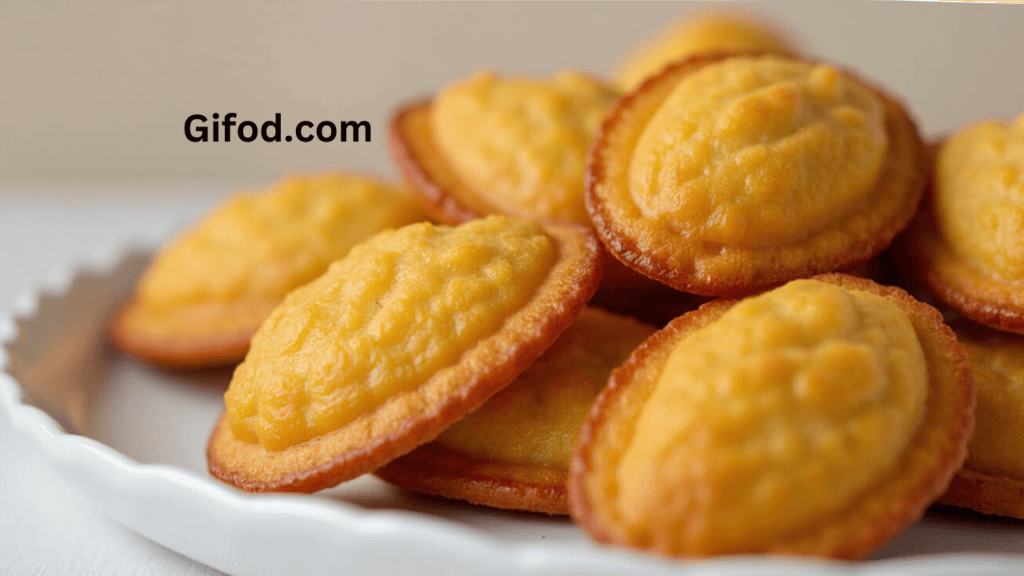
2. Essential Ingredients and Equipment for Perfect Madeleines
Creating perfect madeleines requires attention to detail, both in the ingredients and the equipment used. Here’s what you’ll need:
2.1. Key Ingredients
- Butter: Use high-quality, unsalted butter. The butter is crucial for both flavor and texture. Browned butter (beurre noisette) is often used for a richer, nuttier flavor (more on this later).
- Eggs: Use large, fresh eggs at room temperature. This helps them emulsify better with the other ingredients.
- Sugar: Granulated sugar is typically used, but some recipes may call for a combination of granulated and powdered sugar.
- Flour: All-purpose flour is the standard choice. Make sure to measure it accurately, preferably by weight, for consistent results.
- Baking Powder: A small amount of baking powder provides the characteristic madeleine hump. Ensure it’s fresh for optimal lift.
- Salt: A pinch of salt enhances the other flavors.
- Flavorings: Vanilla extract is a classic addition. Other popular options include lemon zest, orange zest, almond extract, or even spices like cardamom or cinnamon.
2.2. Essential Equipment
- Madeleine Pan: This is the most crucial piece of equipment. Madeleine pans are typically made of metal (tin-plated steel, aluminum, or non-stick) and have shell-shaped indentations.
- Mixing Bowls: You’ll need several mixing bowls for different stages of the batter preparation.
- Whisk: A sturdy whisk is essential for incorporating air into the eggs and sugar.
- Rubber Spatula: A spatula helps to gently fold the ingredients together without deflating the batter.
- Measuring Cups and Spoons: Accurate measurements are key to success.
- Kitchen Scale (Optional but Recommended): Using a scale to measure ingredients, especially flour, ensures the most consistent results.
- Pastry Brush: Used for buttering and flouring the madeleine pan.
- Cooling Rack: Essential for cooling the madeleines after baking.
- Sifter: To aerate the flour and dry ingredients.
3. The Classic Madeleine Recipe: Step-by-Step Guide
This recipe provides a detailed guide to making classic French madeleines. Follow these steps carefully for best results:
3.1. Ingredients
- 120g (1/2 cup + 1 tablespoon) unsalted butter, plus extra for greasing the pan
- 130g (2/3 cup) granulated sugar
- 3 large eggs, at room temperature
- 1 teaspoon vanilla extract
- 150g (1 1/4 cups) all-purpose flour
- 1 teaspoon baking powder
- 1/4 teaspoon salt
- Powdered sugar, for dusting (optional)
3.2. Instructions
- Brown the Butter (Optional but Recommended): In a small saucepan, melt the butter over medium heat. Continue cooking, swirling the pan occasionally, until the butter turns a golden brown color and has a nutty aroma. This is beurre noisette. Remove from heat and let it cool slightly. This step adds a depth of flavor that is truly exceptional.
- Prepare the Madeleine Pan: Generously butter the madeleine pan, ensuring every crevice is coated. Dust the pan with flour, tapping out any excess. This prevents the madeleines from sticking. Place the pan in the refrigerator to chill while you prepare the batter.
- Whisk Eggs and Sugar: In a large mixing bowl, whisk together the eggs and sugar until pale, thick, and fluffy. This should take about 3-5 minutes. The mixture should form a ribbon when the whisk is lifted.
- Add Vanilla: Whisk in the vanilla extract.
- Combine Dry Ingredients: In a separate bowl, whisk together the flour, baking powder, and salt.
- Gently Fold in Dry Ingredients: Gradually add the dry ingredients to the egg mixture, folding gently with a rubber spatula until just combined. Be careful not to overmix, as this can develop the gluten and result in tough madeleines.
- Incorporate Browned Butter: Slowly drizzle the cooled browned butter into the batter, folding gently until evenly incorporated.
- Chill the Batter: Cover the bowl with plastic wrap and refrigerate for at least 1 hour, or preferably overnight. This chilling period is crucial for developing the madeleine’s signature hump. The cold batter hitting the hot oven creates a burst of steam that lifts the center.
- Preheat Oven: Preheat your oven to 375°F (190°C).
- Fill the Madeleine Pan: Remove the chilled madeleine pan from the refrigerator. Fill each indentation about ¾ full with batter. Do not overfill.
- Bake: Bake for 9-12 minutes, or until the madeleines are golden brown around the edges and the centers spring back when lightly touched. The hump should be well-formed.
- Cool: Remove the madeleines from the oven and let them cool in the pan for a few minutes. Then, gently tap the pan on a counter to release the madeleines. Transfer them to a wire rack to cool completely.
- Dust with Powdered Sugar (Optional): Once cooled, dust the madeleines with powdered sugar, if desired.
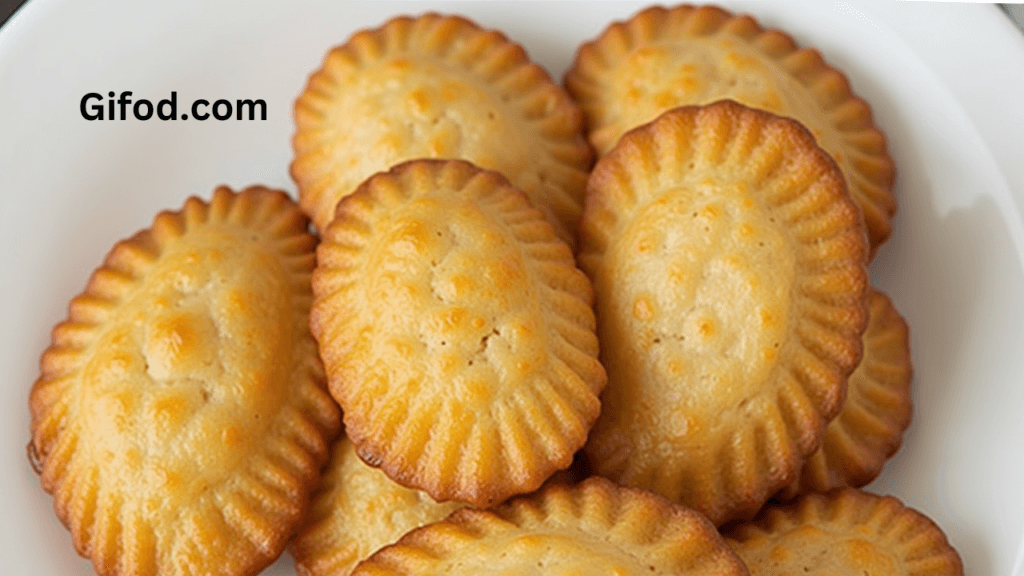
4. Troubleshooting Common Madeleine Problems
Even experienced bakers can encounter challenges when making madeleines. Here are some common problems and their solutions:
4.1. No Hump
- Problem: The madeleines bake flat without the characteristic hump.
- Possible Causes:
- Batter not chilled long enough.
- Oven temperature too low.
- Old baking powder.
- Overmixing the batter.
- Solutions:
- Ensure the batter is chilled for at least 1 hour, preferably longer.
- Use an oven thermometer to verify the oven temperature.
- Use fresh baking powder.
- Mix the batter gently, just until combined.
4.2. Sticking to the Pan
- Problem: The madeleines stick to the pan and are difficult to remove.
- Possible Causes:
- Pan not properly greased and floured.
- Madeleines overbaked.
- Solutions:
- Generously butter and flour the pan, paying attention to the crevices.
- Bake the madeleines until just golden brown, not overbaked.
- Let the madeleines cool in the pan for a few minutes before attempting to remove them.
4.3. Tough Texture
- Problem: The madeleines have a tough, chewy texture.
- Possible Causes:
- Overmixing the batter.
- Too much flour.
- Solutions:
- Mix the batter gently, just until combined. Avoid vigorous stirring.
- Measure the flour accurately, preferably by weight.
4.4. Uneven Baking
- Problem: The madeleines bake unevenly, with some being overbaked and others underbaked.
- Possible Causes:
- Uneven oven temperature.
- Pan placed too close to the heating element.
- Solutions:
- Use an oven thermometer to verify the oven temperature.
- Rotate the pan halfway through baking.
- Place the pan in the center of the oven.
4.5. Dry Madeleines
- Problem: Madeleines are too dry
- Possible Causes:
- Overbaking
- Too much flour
- Solutions:
- Reduce baking time
- Measure ingredients, especially flour, by weight.
5. Madeleine Variations: Exploring Flavors and Techniques
Once you’ve mastered the classic madeleine, you can experiment with different flavors and variations. Here are some ideas:
5.1. Lemon Madeleines
Add the zest of 1-2 lemons to the batter along with the vanilla extract. You can also add a tablespoon of lemon juice for a more intense lemon flavor.
5.2. Orange Madeleines
Similar to lemon madeleines, add the zest of 1-2 oranges to the batter. A touch of orange blossom water can also enhance the flavor.
5.3. Chocolate Madeleines
Add 2-3 tablespoons of unsweetened cocoa powder to the dry ingredients. You can also incorporate chopped chocolate or chocolate chips into the batter.
5.4. Almond Madeleines
Add 1/2 teaspoon of almond extract to the batter along with the vanilla extract. You can also sprinkle sliced almonds on top of the batter before baking.
5.5. Honey Madeleines
Replace some of the granulated sugar with honey (about 1/4 cup). This adds a subtle sweetness and moisture.
5.6. Spiced Madeleines
Add spices like cinnamon, cardamom, ginger, or nutmeg to the dry ingredients for a warm, aromatic flavor.
5.7. Savory Madeleines
Madeleines don’t have to be sweet! You can create savory versions by omitting the sugar and adding ingredients like grated cheese (Parmesan, Gruyere), herbs (rosemary, thyme), or even finely chopped vegetables.
5.8. Gluten-Free Madeleines
Substitute the all-purpose flour with a gluten-free flour blend. Be sure to choose a blend specifically designed for baking.
5.9 Dipped Madeleines
Once the madeleines have cooled, you can dip them in melted chocolate (dark, milk, or white) and then sprinkle with nuts, sprinkles, or sea salt.
6. Serving and Storing Madeleines
Madeleines are best enjoyed fresh, ideally within a few hours of baking. Their delicate texture is at its peak when they are slightly warm.
6.1. Serving Suggestions
- With Tea or Coffee: The classic pairing! The subtle sweetness of the madeleine complements a warm beverage perfectly.
- With Dessert Wine: A sweet dessert wine, such as Sauternes or Moscato d’Asti, pairs beautifully with madeleines.
- As a Simple Dessert: Serve madeleines on their own or with a dollop of whipped cream or fresh fruit.
- As Part of a Dessert Platter: Include madeleines on a platter with other small pastries and treats.
6.2. Storage
- Room Temperature: Store madeleines in an airtight container at room temperature for up to 2-3 days. They will start to lose their crispness after the first day.
- Freezing: For longer storage, freeze madeleines in an airtight container or freezer bag for up to 2 months. Thaw at room temperature or reheat gently in the oven before serving.
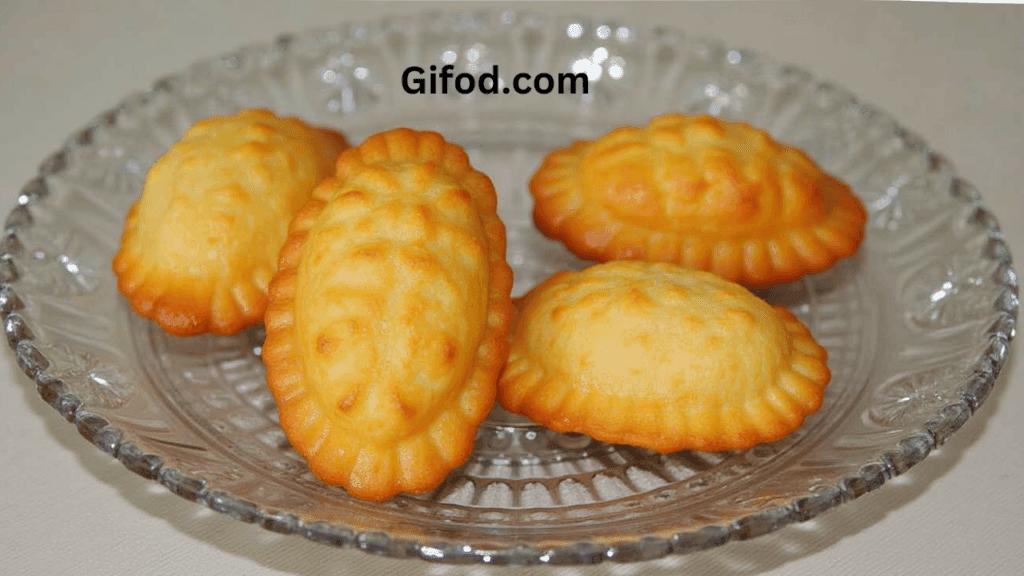
7. Frequently Asked Questions (FAQs) about Madeleines
Q: Can I make the batter ahead of time?
A: Yes, and it’s highly recommended! Chilling the batter for at least 1 hour, or preferably overnight, is crucial for developing the madeleine’s signature hump.
Q: Can I use a different type of pan?
A: While a madeleine pan is essential for achieving the classic shell shape, you could technically bake the batter in mini muffin tins. However, you won’t get the same distinctive shape or texture.
Q: Why are my madeleines sticking to the pan?
A: Make sure you generously butter and flour the pan, paying close attention to the crevices. Also, let the madeleines cool in the pan for a few minutes before attempting to remove them.
Q: Can I use salted butter?
A: It’s best to use unsalted butter so you can control the amount of salt in the recipe. If you only have salted butter, omit the added salt.
Q: My madeleines are flat. What did I do wrong?
A: There are several possible reasons: the batter wasn’t chilled long enough, the oven temperature was too low, the baking powder was old, or the batter was overmixed. See the troubleshooting section for detailed solutions.
Q: What is beurre noisette?
A: Beurre noisette is browned butter. It’s made by melting butter and cooking it until it turns a golden brown color and has a nutty aroma. It adds a rich, complex flavor to madeleines.
Q: Can I make madeleines without a stand mixer?
A: Absolutely! While a stand mixer can make the process easier, a hand mixer or even just a whisk and some elbow grease will work perfectly fine. The key is to whip the eggs and sugar until they are pale and fluffy.
8. Conclusion: The Joy of Baking Madeleines
Baking madeleines is a rewarding experience. These delicate, shell-shaped cakes are a testament to the beauty of simple ingredients and careful technique. Whether you’re baking them for a special occasion or simply to enjoy with a cup of tea, the aroma and taste of freshly baked madeleines are sure to bring joy.
With this comprehensive guide, you now have the knowledge and tools to create your own perfect batch of madeleines. Embrace the process, experiment with flavors, and savor the delicious results! Remember that practice makes perfect, so don’t be discouraged if your first batch isn’t flawless. Keep baking, and you’ll soon be creating madeleines that would make even Proust proud.
